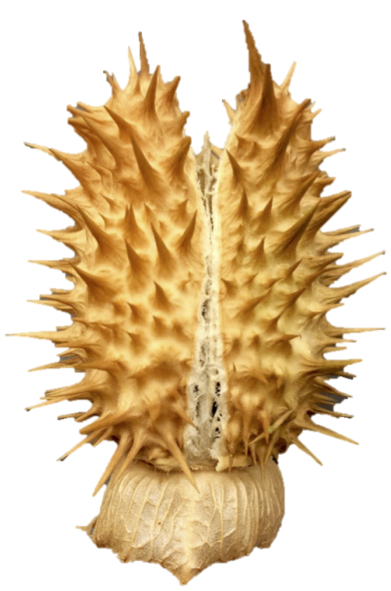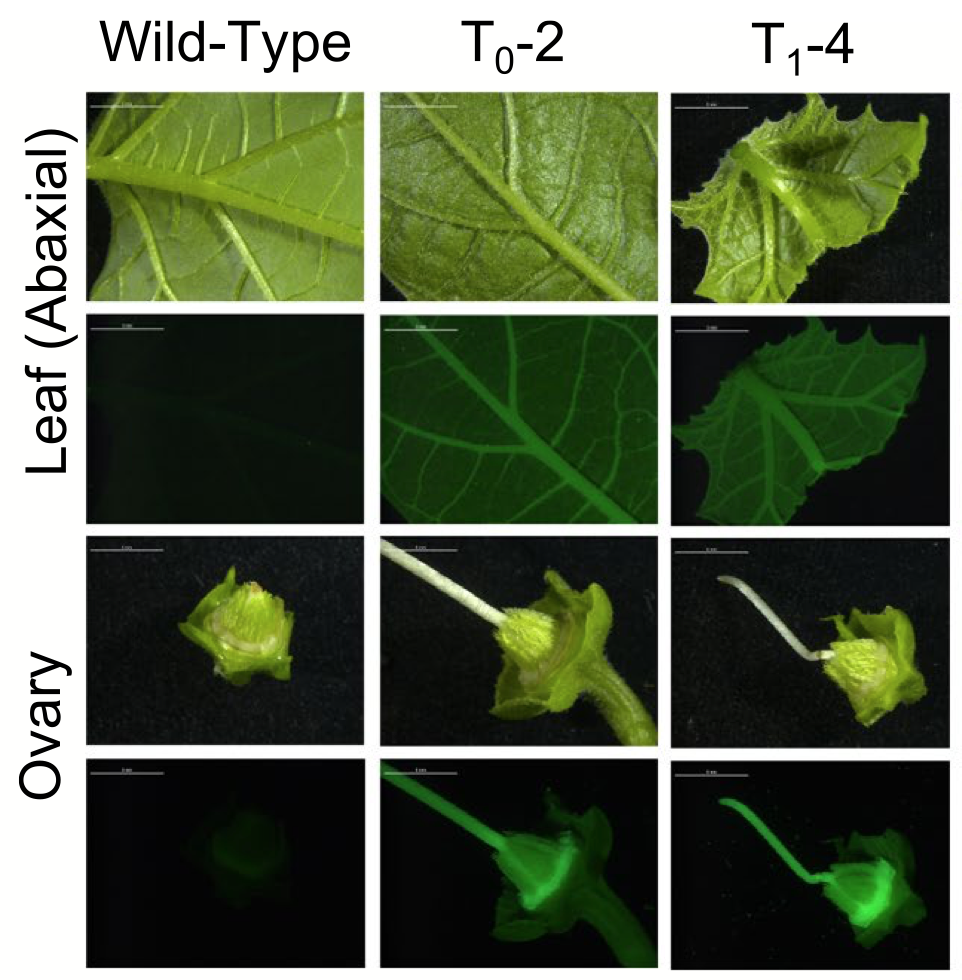Datura Genome
Jimsonweed (Datura stramonium) is a weedy plant in the nightshade family notable for its production of many useful medicinal or insecticidal compounds like the tropane alkaloids hyoscyamine and atropine. The plant was also historically used as a model organism to answer questions regarding aneuploidy and polyplody, and the first haploid flowering plant reported was D. stramonium.

Previously I developed a technique for stable transgenic transformation of D. stramonium by inserting a copy of the GREEN FLUORESCENT PROTEIN gene and tracking its inheritance. This was the first report of stable transgene inheritance in Datura and was an important step toward targeted engineering of the tropane alkaloid synthesis pathway. Stable transformation is also necessary for the application of CRISPR/Cas9 mutatgenesis as well. The technique is based on tissue culture, which can have a number of negative side effects on plant growth.

In order the characterize the impacts of tissue culture on the genome of D. stramonium, I sequenced, assembled, and annotated a draft genome of our plant prior to tissue culture. I did this with guidance from Amy Litt and Jason Stajich, using a combination of Illumina and Oxford Nanopore sequencing technologies. The scripts for this assembly and annotation can be found in my GitHub Repo. We then compared several plants that had undergone our transformation procedure to our reference genome plant using RNA-seq, to characterize differential gene expression, and genome resequencing, to characterize mutation rate. Our manuscript is currently under review, but we found very few differentially expressed genes following tissue culture and a high number of (mostly non-coding) mutations. Examining our genome annotation, we found a large number of predicted genes, but we expect that this is an overestimate based on a number of analyses. We also found gene duplications in the first commited step of tropane alkaloid synthesis, tropinone reductase I, as well as the final step that produced scopolamine, hyoscyamine 6 β-hydroxylase.
Interstingly, the fruits of plants in the genus Datura are dry, dehiscent capsules, superfically similar to that of tobacco. However, Datura is actually more closely related to plants that produce a fleshy berry, such as tomato, instead of a dry capsule. This means that in terms of fruit type, Datura has undergone an evolutionary reversal, and this reversal presents an interesting opportunity to further understand the genetic basis of fruit evolution by comparing the dry fruit of Datura with the dry (but distantly related) fruit of tobacco and the closely related (but fleshy) fruit of tomato. In the future, the transformation technique and the draft genome can be used for more detailed studies of fruit type evolution, as well as, engineering the tropane alkaloid synthesis pathway.
